Rib Roast is the epitome of holiday elegance. Its impressive size guarantees a centerpiece that commands attention, while its rich, buttery flavor satisfies even the most discerning palates. But here’s the secret: simplicity is key. Focusing on quality ingredients and a foolproof cooking method, you can achieve restaurant-worthy results in your own kitchen.
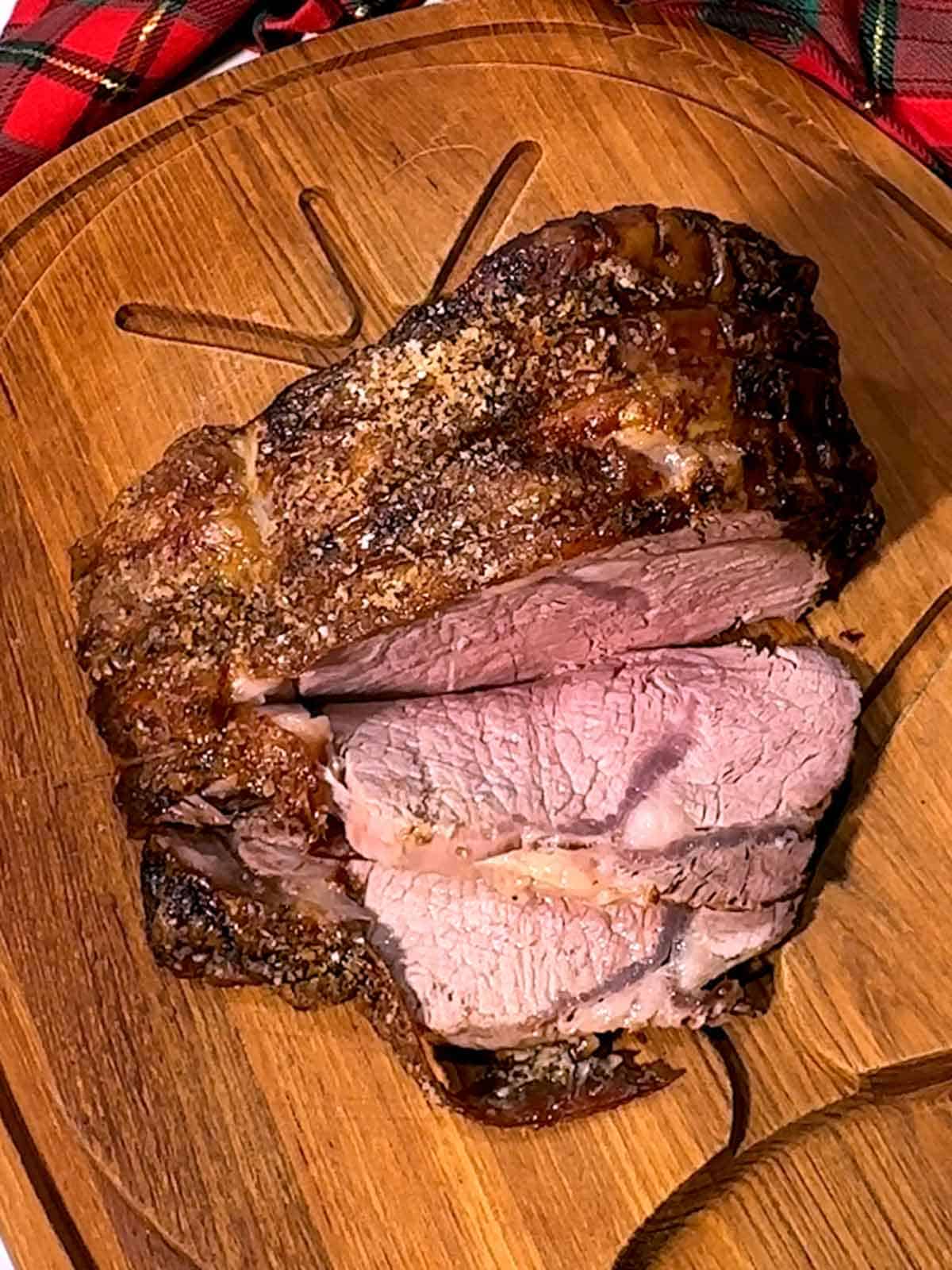
I’ve been making rib roast using this simple recipe for as long as I can remember. The only time I totally screwed up was when I tried making the roast in the microwave before I really understood how the microwave worked – a huge mistake!
Jump to:
Simple Ingredients for Rib Roast
My recipe for rib roast uses only three simple ingredients: A 5.5-pound bone-in rib roast, Kosher salt, and freshly ground black pepper.

I purchased the roast at a local grocery store when it was on sale – a huge sale!
A plus was that the roast was packaged with rib bones that had been cut away from the actual roast but tied back on with butcher twine. This provided the same bone-in benefits without the hassle of the bones when carving the roast. More about that in a minute.
Simple Preparation
- I removed the roast from the refrigerator three to four hours before I was ready to cook it. The reason for doing this was to allow the fat and muscles to relax somewhat, ensuring more even heat penetration.
- I always cook my rib roast in a now vintage Corning Ware roasting pan with a rack. I lined the roasting pan with heavy-duty aluminum foil before inserting the rack. The purpose of the aluminum foil was to minimize the cleanup!

- Then, I covered the rack with another piece of aluminum foil. I poked holes in the aluminum foil with a fork. The reason for doing this was to allow the grease from the cooking roast to seep into the bottom of the roasting pan and minimize the oven mess and smoke from the cooking roast.

- Before I was ready to cook the roast, I patted it dry with paper towels. Then, I liberally sprinkled Kosher salt and black pepper on the top and the sides. I rubbed the salt and pepper into the roast with my hand.
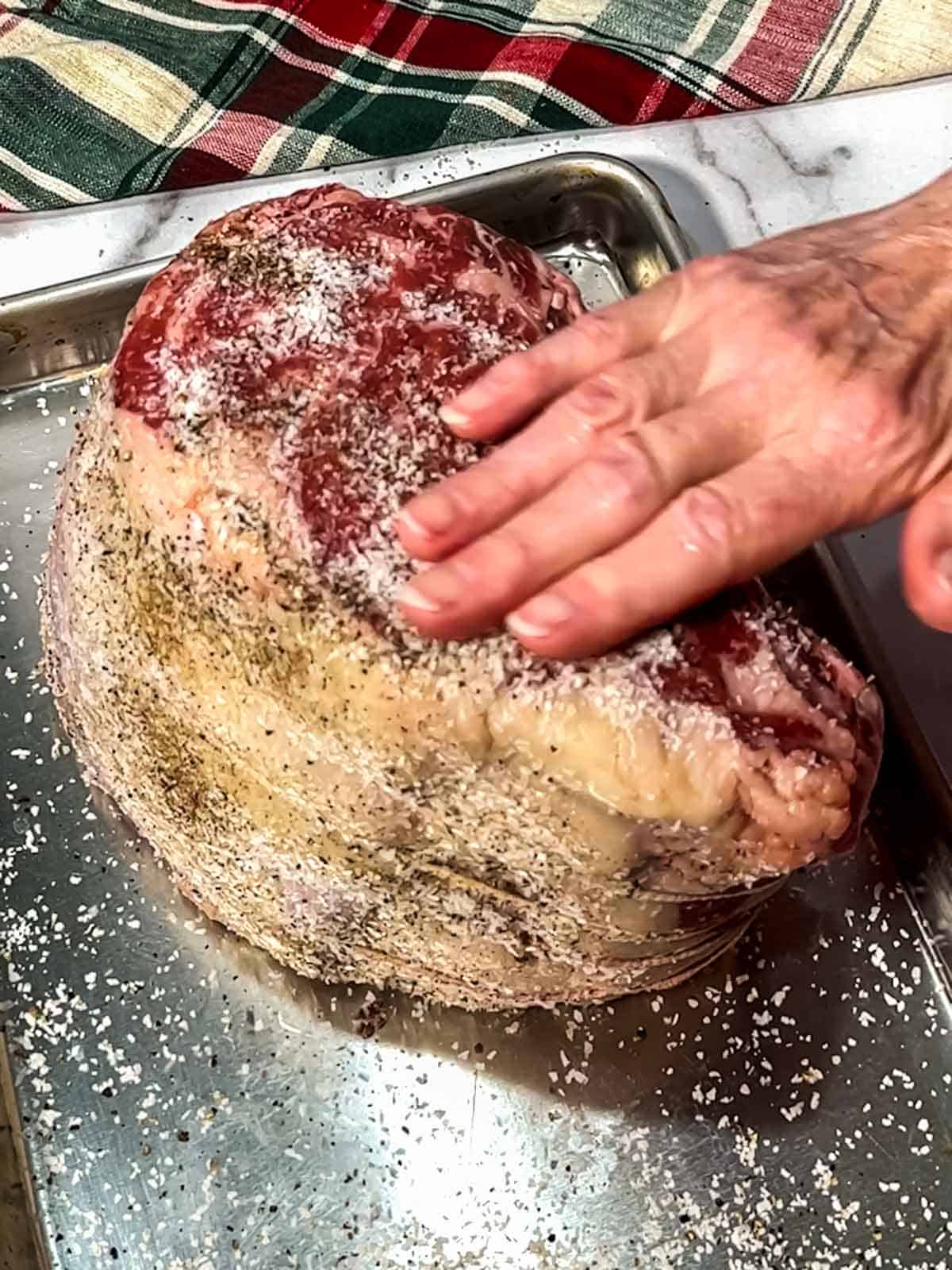
- I transferred the roast to the prepared roasting pan and carefully inserted a thermometer probe. I ensured the probe was as close to the center as possible and not touching the fat or the bones.
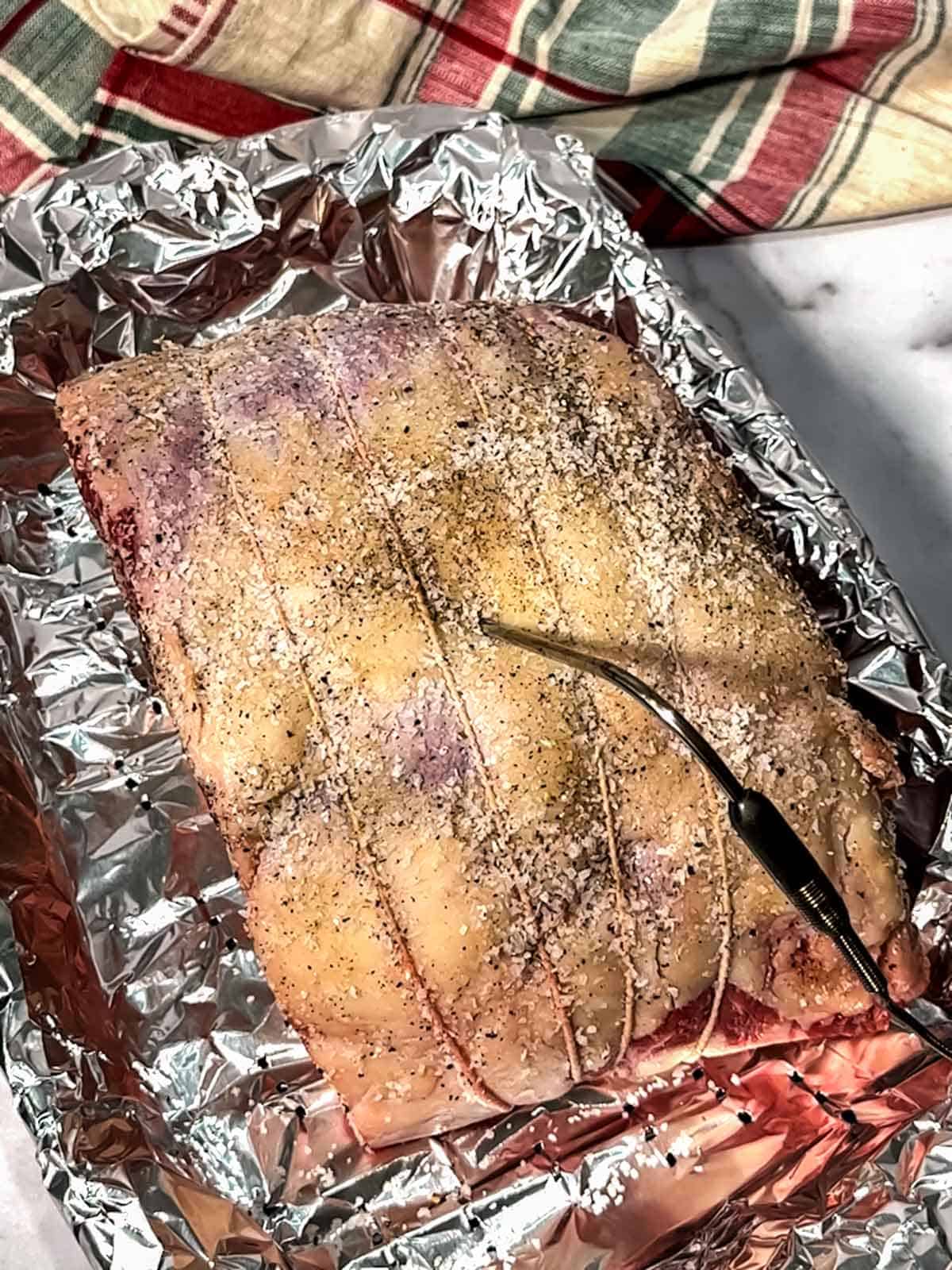
That’s it for the preparation!
Baking the Rib Roast
I placed the rib roast into a preheated 500°F oven and cooked it at that temperature for 20 minutes.
Then, without opening the oven, I reduced the heat to 325°F and cooked the roast until it reached an internal temperature of 140°F. This took about two hours and 40 minutes.
Once the roast reached the 140°F internal temperature, I removed it from the oven and carefully removed the temperature probe. Then, I tented the roast with aluminum foil and let it rest for about 30 minutes.
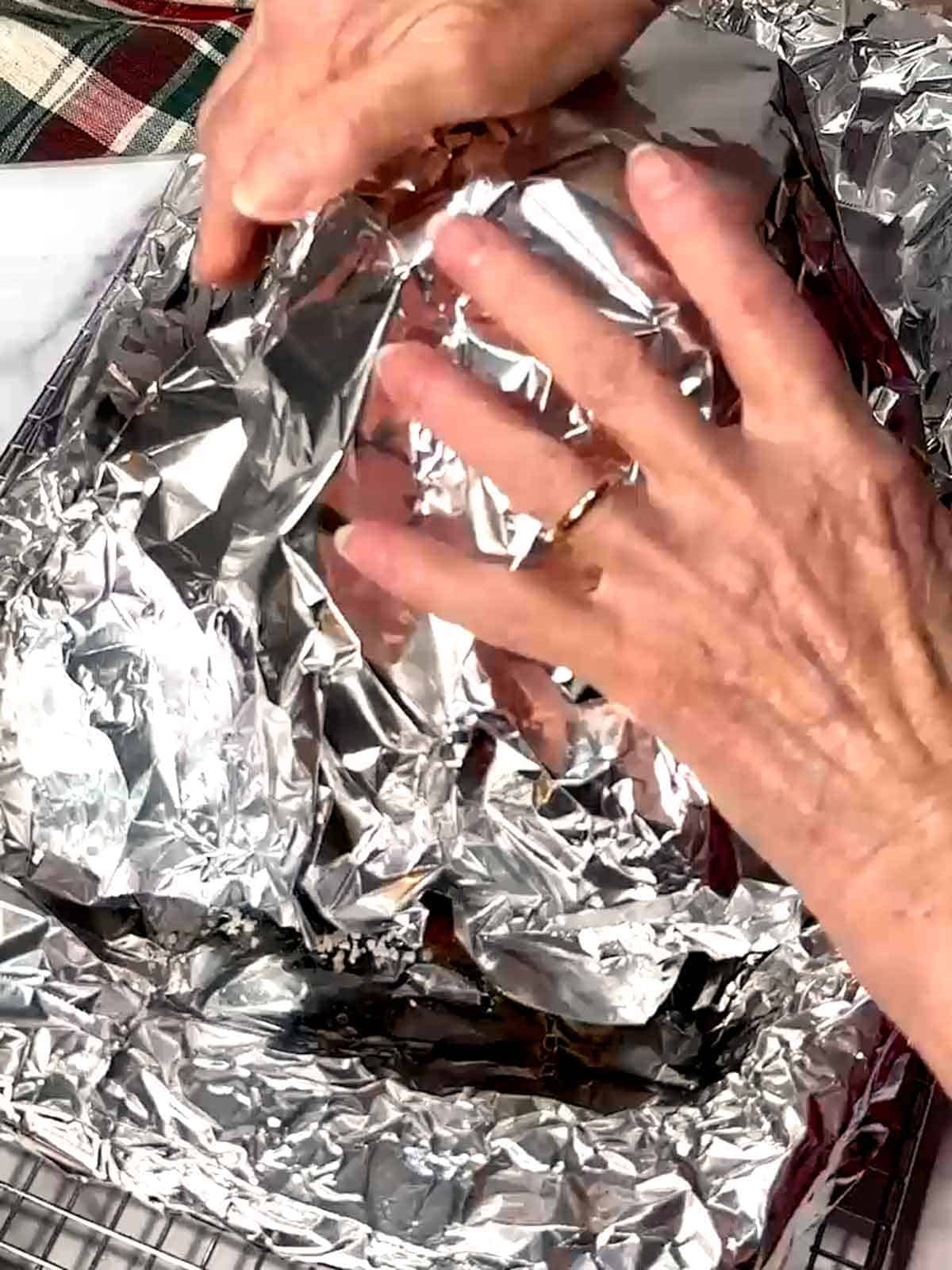
After allowing the roast to rest for 30 minutes, I removed the butcher twine that was holding the bones to the roast and removed the bones.
The moment of truth arrived. As Susan carved the roast, we saw that it was perfectly cooked to our taste – medium to medium well done.
I served the rib roast with smashed parmesan-coated potatoes, steamed green beans, onion gravy, and mini popovers. Normally, I serve the roast with Yorkshire pudding but decided to use the mini popovers instead – the same great taste but a different presentation.
The rib roast was perfectly seasoned and cooked. It was juicy and tender and a delicious, elegant main course for our holiday dinner.
Remember, the key to a successful rib roast is to relax, have fun, and trust the process. With some planning and these handy tips, you can impress your guests and create a lasting memory. Yum!

Frequently Asked Questions
You can use whatever roasting pan with a rack you have on hand. One idea would be to use a quarter or half sheet pan with a wire rack inserted.
There are different preferences related to the degree of doneness in rib roast. Also, the roast will continue cooking, adding about 5°F of doneness when removed from the oven. Therefore, it should be removed when the temperature probe measures about 5°F below the desired degree of doneness. The following is a rough guide for removal from the oven: Rare – 120°F; Medium Rare – 125°F; Medium – 135°F; Medium Well – 145°F.
A bone-in rib roast, also known as a standing rib roast, has the rib bones still attached. This adds flavor and helps to cook the meat evenly. A boneless rib roast is easier to carve, but it doesn’t have the same flavor as a bone-in roast.
You can trim some of the excess fat from the roast but don’t trim it all off. The fat helps to keep the meat moist and flavorful.
When the roast is allowed to rest, the juices redistribute throughout the meat, making it more tender and flavorful.
Leftover rib roast can be stored in the refrigerator for up to 3 days. You can also freeze it for up to 3 months. I like to make roast beef and Provolone cheese sliders with the leftovers!
Recipe Tips and Tricks
- Sear & sizzle: Start at a high temperature (500°F) for 20 minutes to sear the outside of the roast. This locks in juices and creates a flavorful crust.
- Low and slow: Reduce the heat to 325°F for the rest of the cooking time. Monitor with a meat thermometer. Use the chart below for a rough estimate:
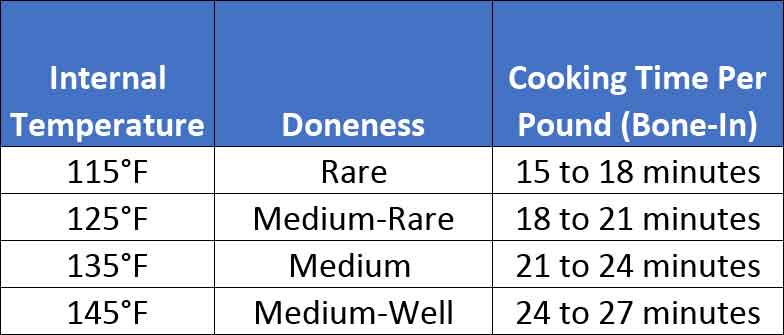
- Good thermometer: Use a good meat thermometer for accurate internal temperature readings. Mine is a ThermoWorks Chef Alarm
- Best of both worlds: Get a bone-in rib roast and ask the butcher to remove the rib bones and tie them back to the roast if it doesn’t already come that way. The bones help to insulate the roast, promoting even cooking and adding richness to the drippings. Carving is easier because the bones are easily removed once the roast is done.
I hope you liked this recipe for the Simple and Elegant Rib Roast as much as I do. If so, please consider rating it and leaving a comment. Also, if you’d like to receive notifications of new posts by email, enter your email address in the Subscribe box.
Thank you so much for visiting Pudge Factor. I hope you’ll come back!
Recipe
Want to Save This Recipe?
Enter your email & I’ll send it to your inbox. Plus, enjoy weekly doses of culinary inspiration as a bonus!
By submitting this form, you consent to receive emails from Pudge Factor.

Rib Roast (Simple and Elegant)
Equipment
- Roasting pan with rack
- Meat thermometer
Ingredients
- 5 to 6 pound Bone-in rib roast (See Tip 1)
- 1 ½ Tablespoons Kosher salt
- 2 teaspoons Freshly ground black pepper
Instructions
- Remove the roast three to four hours before cooking to allow to come to room temperature (See Tip 2)
- Line a roasting pan with a removable rack with heavy-duty aluminum foil. Add the rack and line the rack with aluminum foil. Poke holes in the top aluminum foil to allow the fat to drain away during cooking easily. (See Tip 3)
- Preheat oven to 500°F.
- Pat the roast dry with paper towels. Liberally coat the top and sides of the roast with Kosher salt and pepper. Use your hands to rub the salt and pepper into the roast. Insert a meat thermometer probe into the center of the roast, being careful not to hit either the fat or the bones.
- Bake in a preheated 500°F oven for 20 minutes. Without opening the oven, reduce the temperature to 325°F and continue roasting until the internal temperature reaches 140°F. (See Tip 4)
- Remove the roast from the oven. Carefully remove the temperature probe and tent the roast with aluminum foil for 30 minutes. Before carving, remove the butcher twine. (See Tip 5)
- Yield: 5 servings (See Tip 6)
Video
Tips/Notes
- If the rib bones are attached, ask the butcher to remove them, but tie the ribs back with butcher twine. If the ribs have been removed and tied back, you’re good to go!
- It’s important to allow the roast to come to room temperature (somewhat) before cooking it. This ensures a more even roasting.
- I’ve consistently used the technique of poking holes in the top piece of aluminum foil to allow the run-off grease to accumulate in the bottom of the roasting pan beneath the top layer of aluminum foil. This minimizes the smoke from the roasting and helps keep the oven clean.
- The time in the oven will vary depending on your oven temperature and desired doneness. See the tips above the recipe for rules-of-thumb for cooking times.
- It’s important to let the roast rest before carving it. This allows for an even distribution of the juices and promotes a moist roast.
- Store leftovers in the refrigerator for up to three days or in the freezer for up to three months.


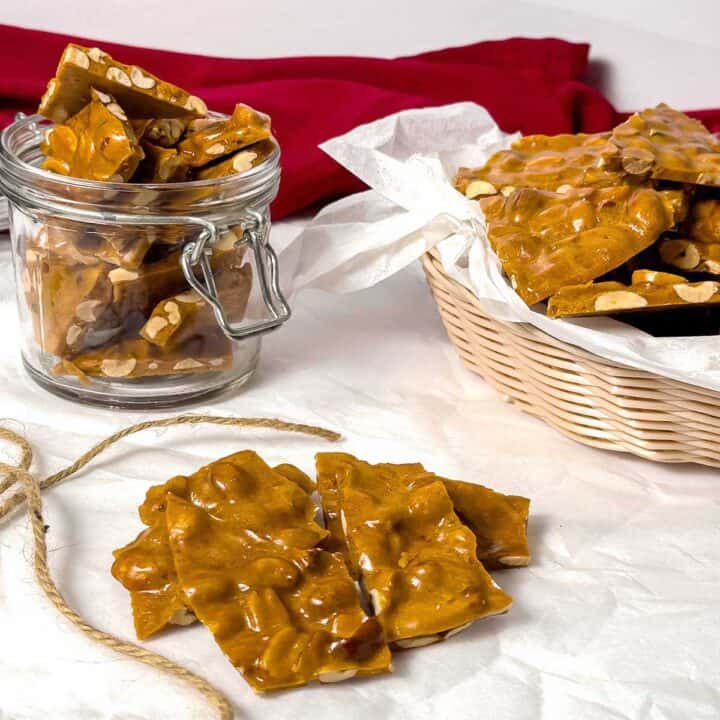
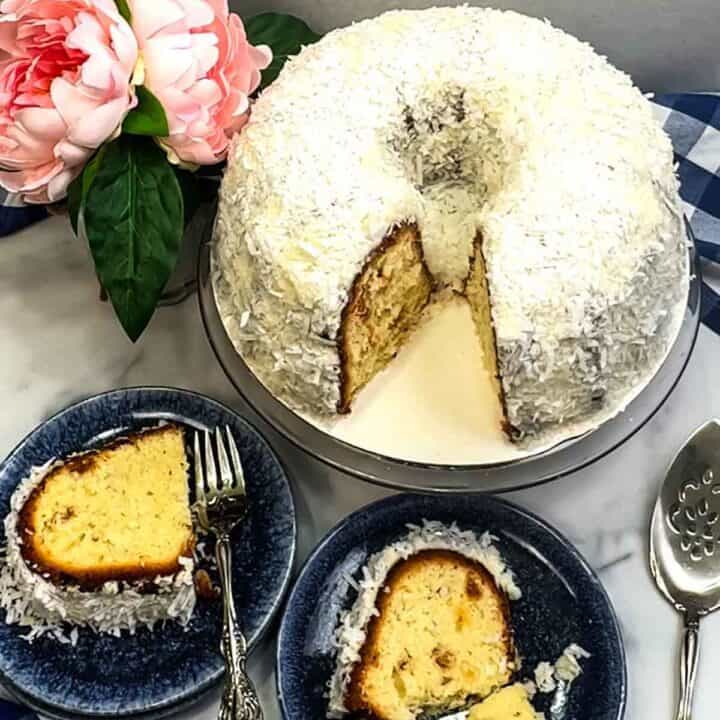
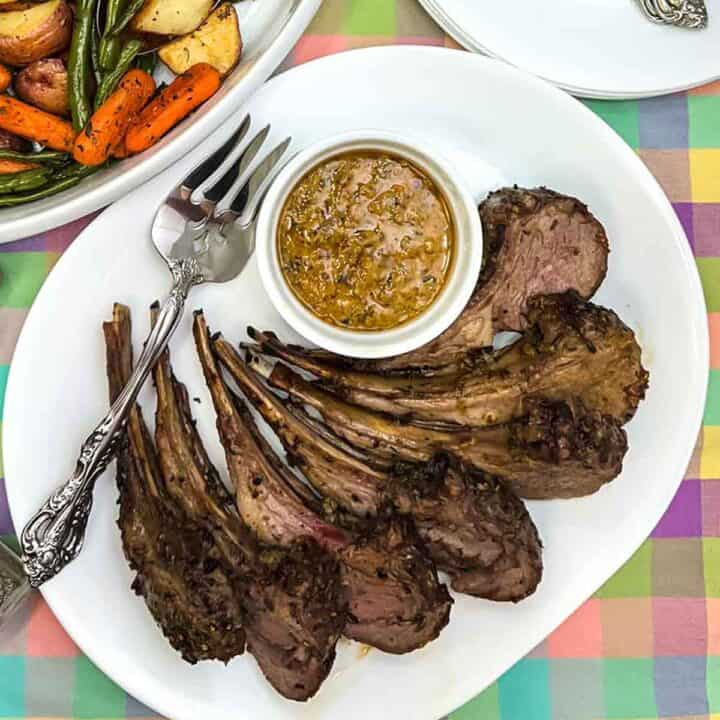
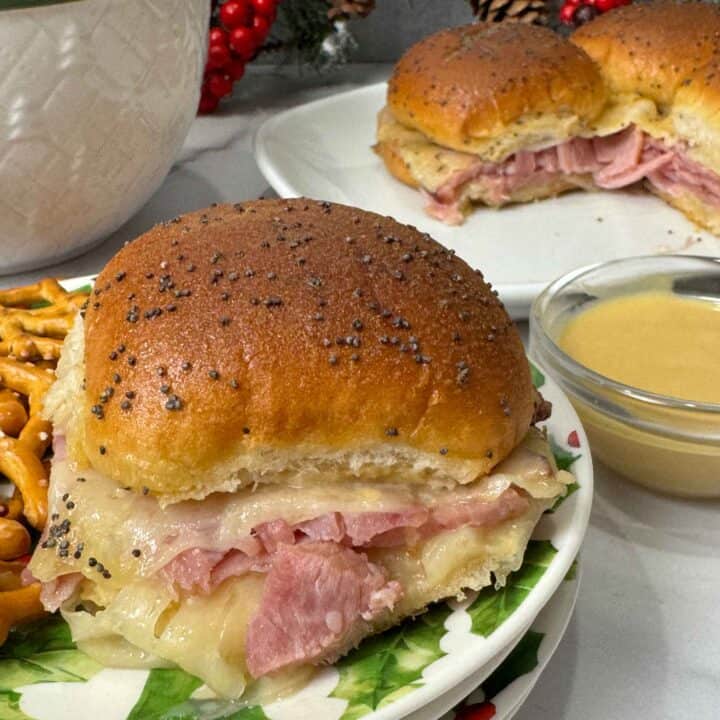
Leave a Reply